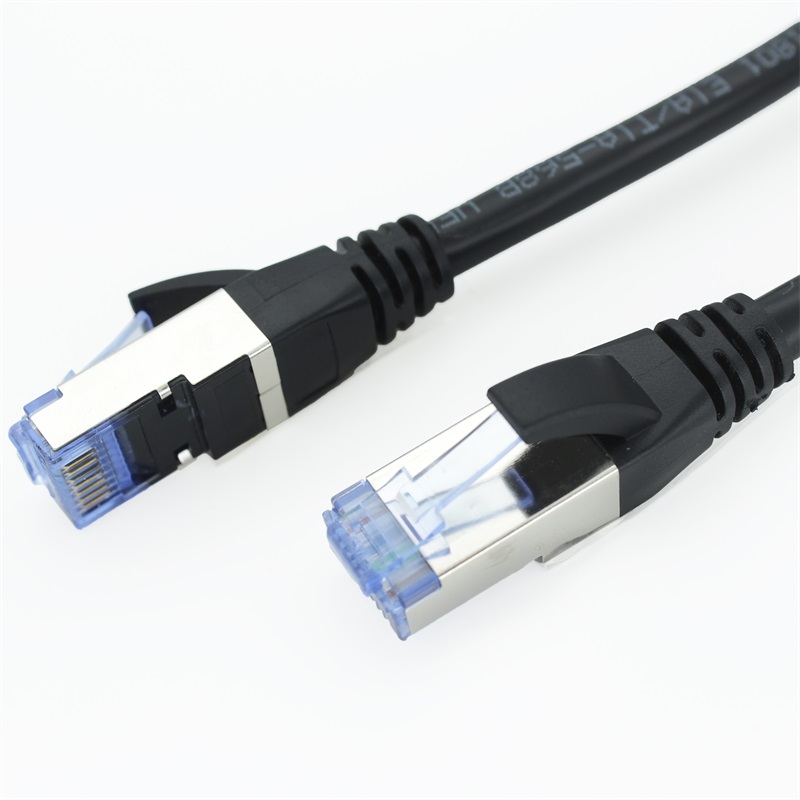In today's hyperconnected world, the demand for faster and more reliable network connections is ever-present. To meet this need, networking infrastructure has evolved, and Cat6A (Category 6A) cable has emerged as a critical component. This article explores the purpose of Cat6A cable and its role in enabling high-speed networking.Cat6A, short for Category 6A, is a type of Ethernet cable that belongs to the twisted-pair cable family. It is an enhanced version of its predecessor, Cat6 cable, and is designed to support higher data transmission speeds and offer improved performance and reliability.
Key Features of Cat6A Cable:
Higher Data Rates: Cat6A cables are capable of supporting data rates of up to 10 Gigabits per second (Gbps) over a distance of 100 meters, making them ideal for high-speed networking applications.
Enhanced Performance: They provide superior performance in terms of reduced crosstalk and noise interference, ensuring a more reliable and stable network connection.
Backward Compatibility: Cat6A cables are backward compatible with lower-grade cables like Cat6 and Cat5e, allowing for seamless integration into existing network infrastructure.
Shielding: Many Cat6A cables come with additional shielding (FTP/STP) to further reduce electromagnetic interference, making them suitable for environments with high interference potential.

The Purpose of Cat6A Cable
Cat6A cable serves several essential purposes in modern networking environments:
1. Supporting 10 Gigabit Ethernet (10GbE)
The primary purpose of Cat6A cable is to facilitate 10 Gigabit Ethernet, which offers data transmission speeds of up to 10 Gbps. This high-speed capability is crucial for businesses and organizations that handle large volumes of data, such as data centers, universities, and enterprises.
2. Future-Proofing Networks
As data demands continue to grow, future-proofing network infrastructure is essential. Cat6A cables are designed to meet not only today's requirements but also the higher bandwidth needs of tomorrow. Investing in Cat6A ensures that your network infrastructure can handle emerging technologies without costly upgrades.
3. Supporting High-Bandwidth Applications
Cat6A cables are well-suited for applications that demand significant bandwidth, such as high-definition video streaming, online gaming, teleconferencing, and data-intensive cloud computing. They ensure a smooth and uninterrupted user experience for these bandwidth-hungry services.
4. Data Center Connectivity
In data centers, where large volumes of data are processed and transferred daily, Cat6A cables are essential. They enable reliable and high-speed connections between servers, switches, and storage systems, ensuring efficient data management and access.
5. Reduced Latency
Cat6A cables offer lower latency compared to lower-grade cables, making them ideal for applications where minimal delay is crucial, such as online gaming and real-time financial trading.
6. Enhanced Reliability
The improved shielding and reduced crosstalk of Cat6A cables contribute to their reliability. This makes them suitable for environments where network downtime is not an option, such as critical business operations and healthcare facilities.
Conclusion
Cat6A cable plays a pivotal role in the world of modern networking. Its purpose is to provide the necessary infrastructure for high-speed data transmission, support emerging technologies, and meet the ever-increasing demands of data-intensive applications. Whether in data centers, business networks, educational institutions, or home setups, Cat6A cable ensures a robust and reliable network connection that is vital in today's digital age. As technology continues to advance, Cat6A remains a solid investment for those seeking to stay at the forefront of network performance and efficiency.


